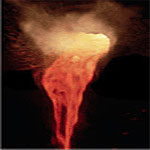Lead Production Methods
Since solubilization of lead compounds in solvents is low, therefore, pyrometallurgy (dry) is used to produce lead. Essentially lead is extracted in both traditional and new ways.
IRAN LEAD & ZINC INDUSTRIES & MINES ASSOCIATION | Lead production methods
- The traditional method or the blast furnace method
A.t the time being, more than 75 percent of the world's lead is produced in this way. Due to the high volume of investment, causing more pollution and lower energy efficiency, this method is obsolete. Preparation of lead in this method is carried out in three steps:
1- The Stage of Sintering and Roasting
In this step, the lead concentrate will heat in order to convert the sulfur compounds to lead oxide, and remove the volatile substances and unstable compounds from the concentrate.
2-The Stage of Melting and Reclamation
In this stage, the refined concentrate with the help of Auxiliary materials for melting and coke to enter the blast furnace and formed by blowing of oxygen and heat, reclaimed gases are formed and lead to the conversion of different components of lead to pure lead. The lead is entered into the molten phase and the impurities along with the overhead structures, move forward to overhead.
3-The Stage of Refine
The lead grade obtained from the furnace is about 97%. To increase the grade to 99.9%, at this stage impurities such as Zn; Cd; Ag; Cu are deleted.
- B.New or direct methods
In these methods (Kaldo method or TBRC, KIVCAT method, QSL method and autocomponent method), unlike the blast furnace method, extraction of lead from the ore is done in one step and there is no need to refine the concentrate separately. Similar to the traditional way, Raw lead is required to be refined in order to increase the grade.


